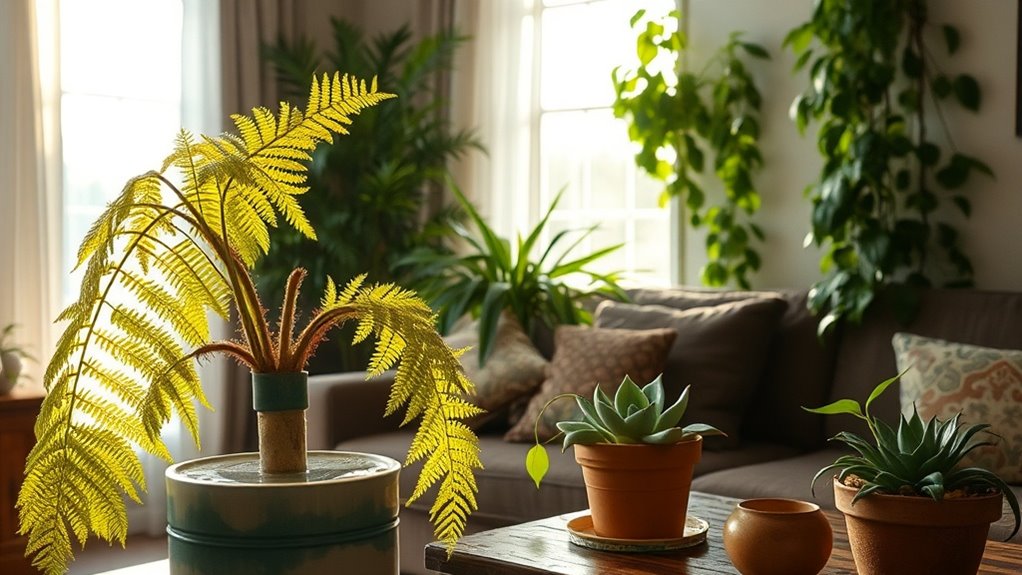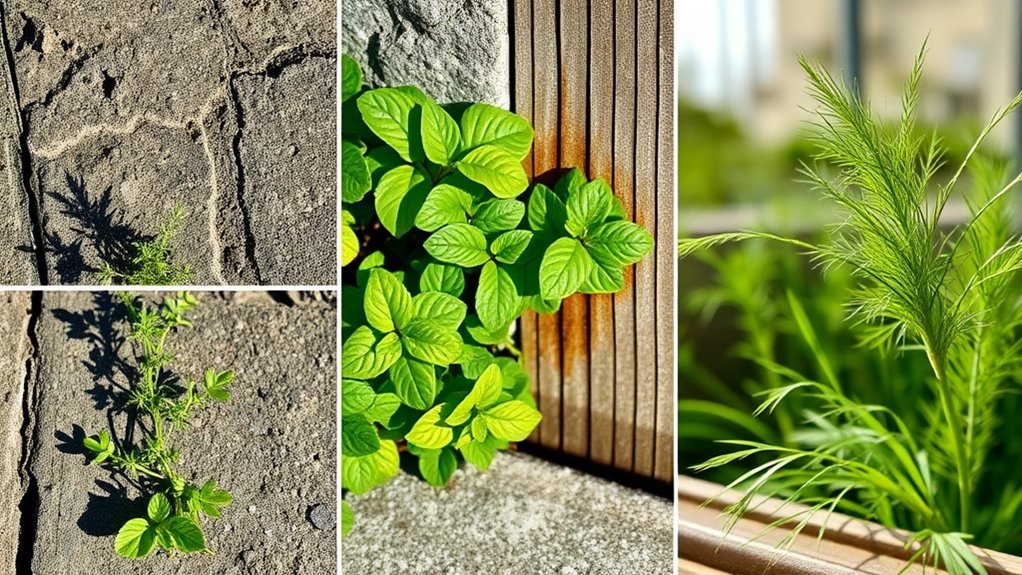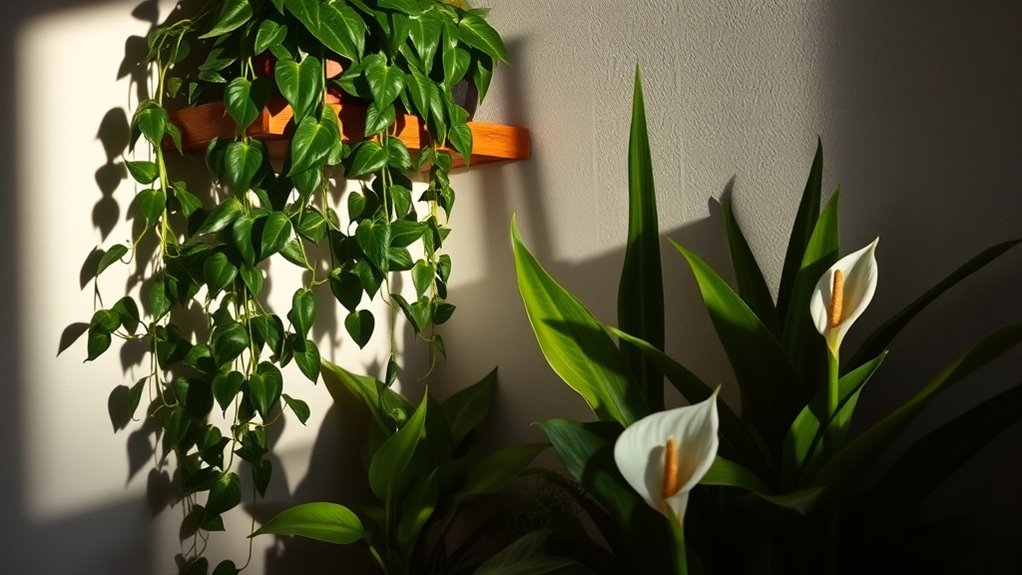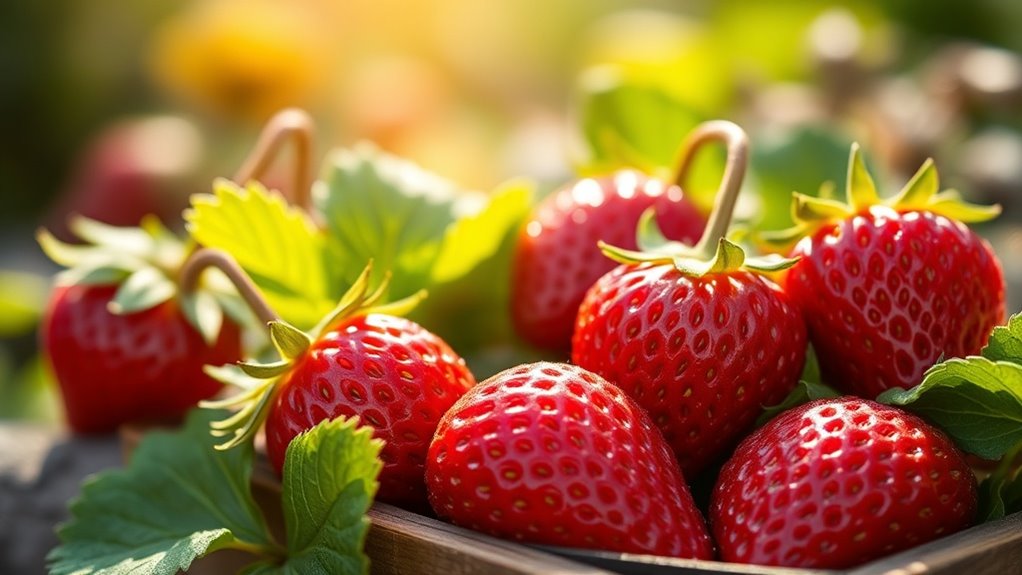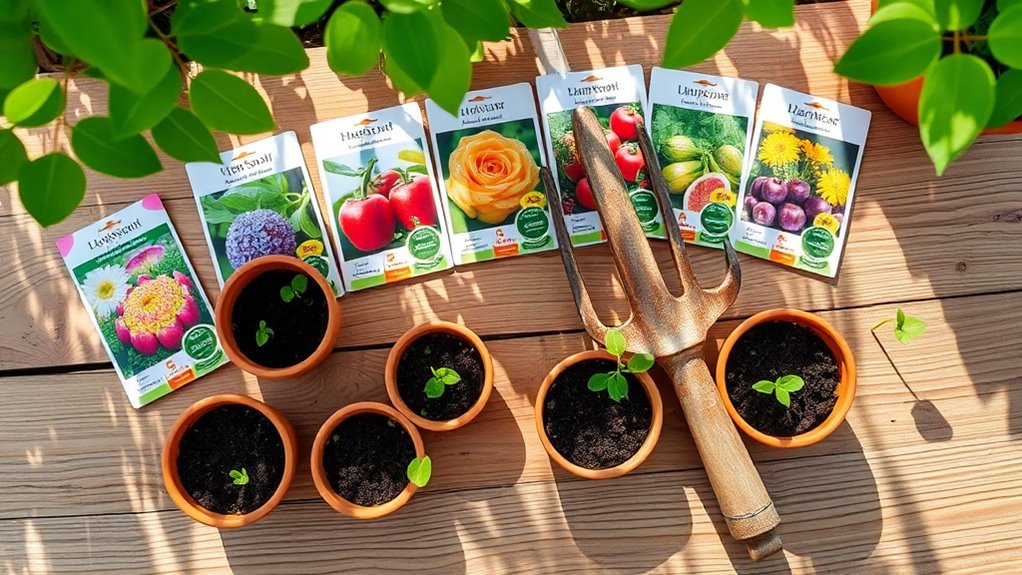The Indoor Plant Care Mistakes You Might Be Making
You might not realize that overwatering is one of the leading causes of indoor plant demise. It’s easy to think your plants need more water when yellowing leaves appear, but this often signals a deeper issue like root rot. Ignoring specific light requirements can stunt growth just as much. There are several other common mistakes you could be making that are jeopardizing your plants’ health. Let’s explore these pitfalls further.
Overwatering Your Plants
While it may seem natural to keep your indoor plants well-watered, overwatering can quickly lead to problems that threaten their health.
One of the most common indoor plant mistakes is ignoring the signs of excess moisture, like yellowing leaves or root rot.
Always check the soil’s moisture level before watering, ensuring your plants get what they need without drowning. A common indicator of overwatering is the presence of yellowing leaves, which can signal that your plant is struggling to breathe due to saturated soil.
Ignoring Light Requirements
When you choose to ignore your plants’ light requirements, you’re setting the stage for poor growth and health issues.
Each plant has specific light needs—some thrive in bright, direct sunlight, while others prefer low light.
Assess your space and position plants accordingly.
Rotate them occasionally to ensure even light exposure, and watch for signs of stress, adjusting their placement as needed.
Additionally, pairing your tomatoes and peppers with companion plants can help optimize their light utilization and overall health.
Neglecting Soil Health
Soil health is crucial for the overall success of your indoor plants, yet many overlook this vital aspect of plant care.
To ensure your plants thrive, use high-quality potting mix that drains well and provides essential nutrients. Regularly check for compaction or poor drainage, and replenish nutrients with organic fertilizers. Don’t forget to repot your plants every couple of years to refresh the soil. Additionally, incorporating essential soil ingredients can significantly enhance nutrient availability and support healthier plant growth.
Overstocking Your Plant Space
Overstocking your plant space can lead to a myriad of problems that hinder your indoor garden’s health.
When plants are crammed together, competition for sunlight, water, and nutrients increases, stunting growth. Poor air circulation may encourage pests and diseases.
To optimize plant health, ensure adequate spacing; it promotes better light exposure and airflow, allowing each plant to thrive in its own environment. Moreover, proper air circulation is essential in preventing fungal infections that could devastate your collection.
Failing to Monitor Temperature and Humidity
While you might focus on watering and light, neglecting to monitor temperature and humidity can seriously impact your indoor plants’ health.
Consider these factors:
-
Ideal Temperature: Most plants thrive between 65-75°F (18-24°C).
-
Humidity Levels: Aim for 40-60% humidity.
-
Drafty Areas: Avoid placing plants near cold drafts.
-
Heat Sources: Keep plants away from radiators or heaters.
Consistent conditions lead to thriving greenery.

